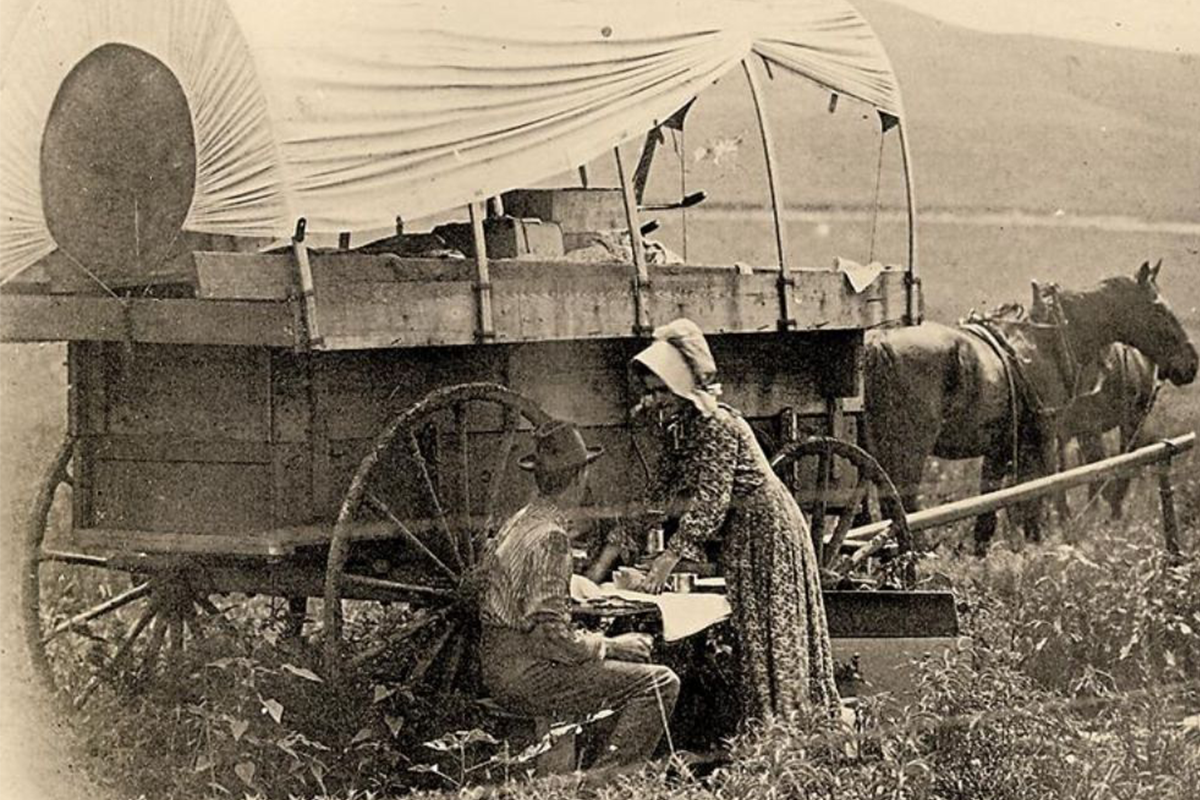
For the most part, the women did not want to leave friends, travel some 2,000 miles home and make that trek of several months. Most of it was walking. They only went because their husbands or fathers insisted.
And on the journey, they cooked over campfires instead of in brick ovens. They made their meals with limited provisions and what they could glean along the trail. They washed with river water almost as muddy as the clothes. Their family members suffered illnesses such as cholera or yellow fever or pneumonia. Or they were injured in wagon or gun accidents. Or they drowned or were snake-bit or suffered some other calamity.
Deaths on the Oregon-California Trail could come from disease, accident, starvation, misadventure, slaying, or madness. But whatever the method, the Oregon Trail, leading emigrants west from Missouri or Illinois through Kansas, Nebraska, Wyoming, and eventually into Oregon, was a place of perishing. The Bureau of Land Management estimates that as many as 10% of the approximately 300,000 pioneers who rode the trail did not make it. It was about the same for the California Trail.
Grisly passing’s came at the hands mostly of cholera, which took the lives of thousands of pioneers. But they were also gunshot by accident, mostly by pioneers who were heavily armed but unfamiliar with weapon handling. People were crushed by wagon wheels, drowned, stabbed, or simply vanished.
The most famous and horrific tragedy on the Oregon/California Trail was the ill-fated Donner Party during the winter of 1846-1847. A total of ninety people in the party perished on the entire journey, most in the two winter camps. A few of the dead were eaten by the survivors. Thirty-four died in the camps at Truckee Lake and Alder Gulch, 25 males and 9 females. No adults over the age of 49 survived. Children between the ages of 6 and 14 fared than infants of 6 and younger. The three most significant factors in survival were age, sex, and the size of family group that each member traveled with. The survivors were on average, 7.5 years younger than those who died.
Men tend to metabolize protein faster. The women had more body fat. Also, they don’t require as great a caloric intake. The younger ones were more likely to survive. 66% of the men 20-29 died.




